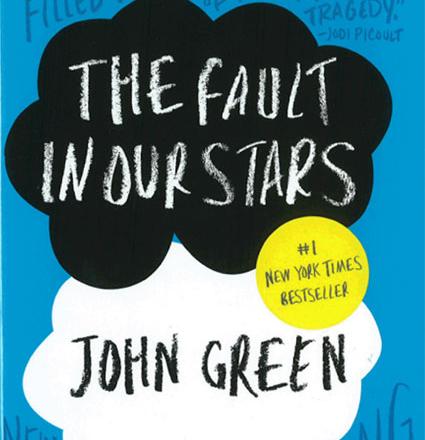You are here
Utopia or nightmare?
By Sally Bland - Apr 12,2020 - Last updated at Apr 12,2020

The Circle
Dave Eggers
New York: Vintage Books, 2014
Pp. 497
“The Circle” is a novel bordering on science fiction of the type that could conceivably become true.
Mae is a very bright young woman from a small nondescript California town. After graduating from college, she had worked at the local utilities company for over a year, enduring boredom and non-recognition of her considerable computer skills but stayed on because she needed to pay off her student loans. “All of it felt like something from another time, a rightfully forgotten time, and made Mae feel that she was not only wasting her life but that this entire company was wasting life, wasting human potential and holding back the turning of the globe”. (p. 11)
Everything changes when Annie, Mae’s former college roommate, helps her land a job at the Circle, the world’s leading tech company that has subsumed most of the others. Annie is part of the Gang of 40, the leading innovators and thinkers at the company, headed by three executives referred to as the Three Wise Men. The Circle seems modelled on the actual Google campus in Mountain View, California, but exponentially magnified. It’s a total environment with extensive eating, cultural, sports, fitness, social and medical facilities, in addition to offices, laboratories, exhibition halls and dormitories. The company takes good care of its employees; Mae is even able to get comprehensive health insurance for her parents, especially meaningful as her father suffers from a debilitating degenerative disease and is struggling with poor insurance coverage. A thousand threads link the employees to the company.
Mae begins in Customer Experience (once called customer service) and excels in her work, but she finds out that this is not enough. Employees are expected to attend the many events on campus and to keep in constant touch with their colleagues, friends and customers via social messaging. Soon she has multiple screens on her desk, each devoted to a particular type of communication. Going off on one’s own or doing something spontaneously off campus without communicating are viewed with suspicion; everyone should document, share and benefit from everything.
Oddly, one of the Wise Men, the boy genius who envisioned the idea of the Circle and devised the technology that made it possible, is seldom seen around the campus anymore. But his invention is pervasive: The Unifying Operating System combines users’ social media profiles, payment systems, passwords, email accounts, preferences, tools, etc. “You had to use your real name, and this was tied to your credit cards, your bank… One button for the rest of your life online… Though some sites were resistant at first, and free-internet advocates shouted about the right to be anonymous online, the TruYou wave was tidal and crushed all meaningful opposition… the actual buying habits of actual people were now eminently mappable and measurable, and the marketing to those actual people could be done with surgical precision”. (pp. 21-22)
Most users are delighted as it simplifies their lives, but there are a few detractors. According to Mae’s ex-boyfriend, who wants to live a different kind of life, “the tools you guys create actually manufacture unnaturally extreme social needs”. (p. 134)
Having created a strong commercial base, the Circle expands into other fields with multiple projects aimed at eliminating all society’s ills and documenting everything, such as how many trees in the Amazon rainforest, to arrive at total knowledge. All this data is stored on the cloud and non-deletable. With the aim of ending child abductions, chips can be implanted in all children to track their location. With the aim of ending corruption and deepening democracy, politicians are encouraged to wear a device to make all their actions transparent. Those who don’t wear the device are assumed to be doing something wrong. Soon everyone could wear it, their every action being broadcast on public screens. The Circle is closing: Everyone is transparent, and everything can be known. The Circle is poised to take over governmental functions. Mind-reading and mind-control are only a click away.
Eggers’s implicit subtext is that the Circle is a very “white”, elite enterprise where social mobility depends on unquestioningly adopting certain values and practices. Under a veneer of choice, there is subtle, but effective coercion. Employees can vote on many things, such as if they want more vegetarian options at lunch, but larger priorities are already set in stone. What will happen to the outliers, the poor and the socially disadvantaged who have no access to this system? In effect, two parallel worlds are emerging: Mae “found it difficult to be off-campus… There were homeless people, and there were the attendant and assaulting smells, and there were machines that didn’t work, and floors and seats that had not been cleaned, and there was, everywhere, the chaos of an orderless world”. (p. 373)
With the fast-paced, riveting story of Mae’s induction into the Circle, Eggers shows the dangers of runaway technology even if guided by geniuses with utopian ideas. There is also an implicit critique of neoliberalism which eats away at government responsibility for its citizens. The story poses urgent questions: Should being “connected” be mandatory all the time? Are thousands of virtual friends better than solid, face-to-face friendships? Does society need to know everything? Should privacy be obliterated? Can the world be perfect?
Related Articles
The point of departure for this book is that the world is not as it should be; nor does it have to be that way. The persistence of poverty, inequality, disease, environmental degradation and violence are well documented. The question is what to do about it. Lauren Speeth offers an inventive, carefully charted approach for those aspiring to be agents for change.
AMMAN — Of all the NGOs and business mentors telling entrepreneurs how to catapult their start-ups to success, very few give free, app
“The Fault in Our Stars” is the endearing and invigorating love story of two exceptional American teenagers. Hazel and Augustus are extraordinary in terms of intelligence and imagination, but their exceptionality also has its downside: They meet in a support group for cancer survivors, somewhat euphemistically named, since each week someone is missing from the group meeting, never to return.

















